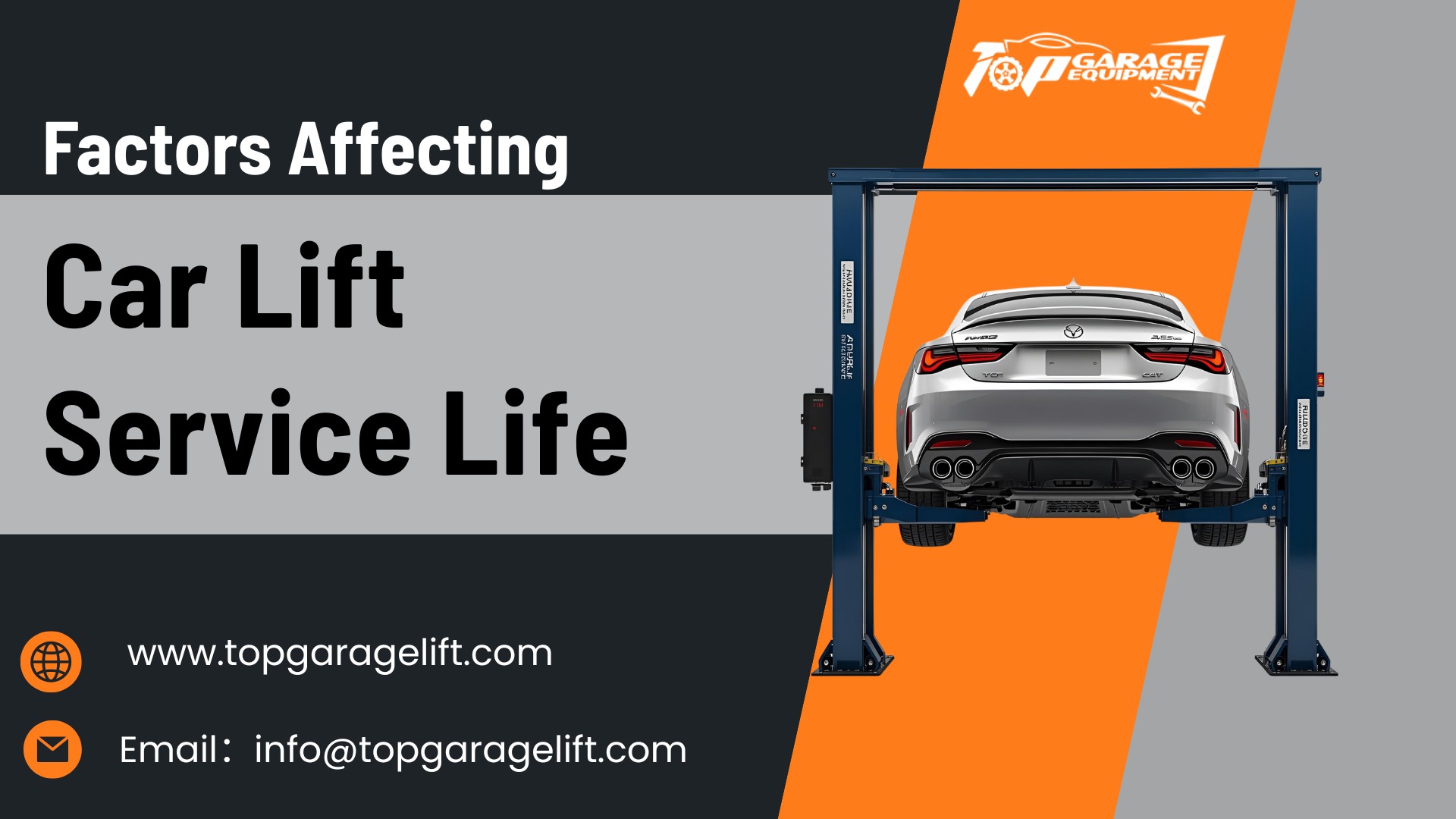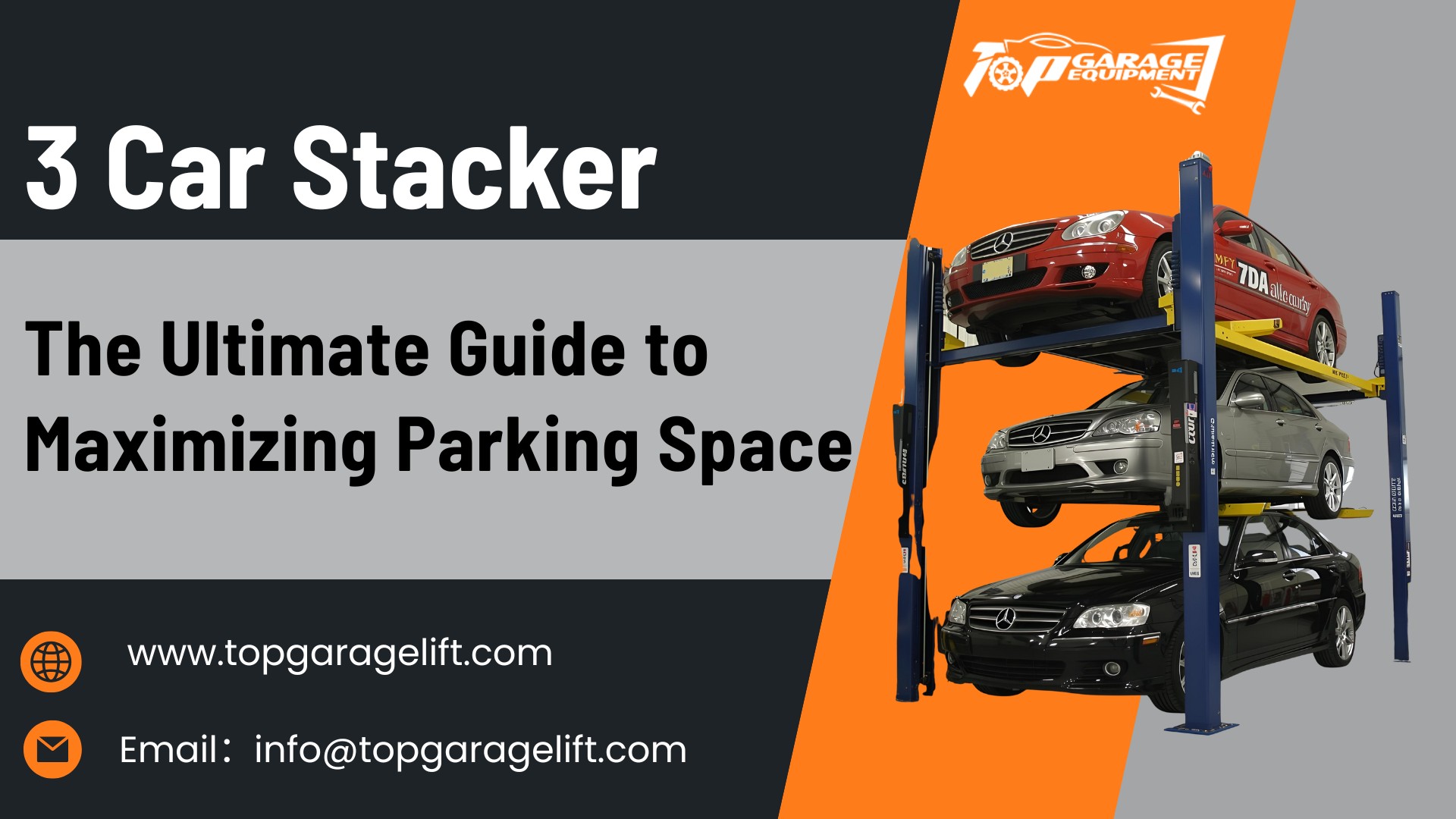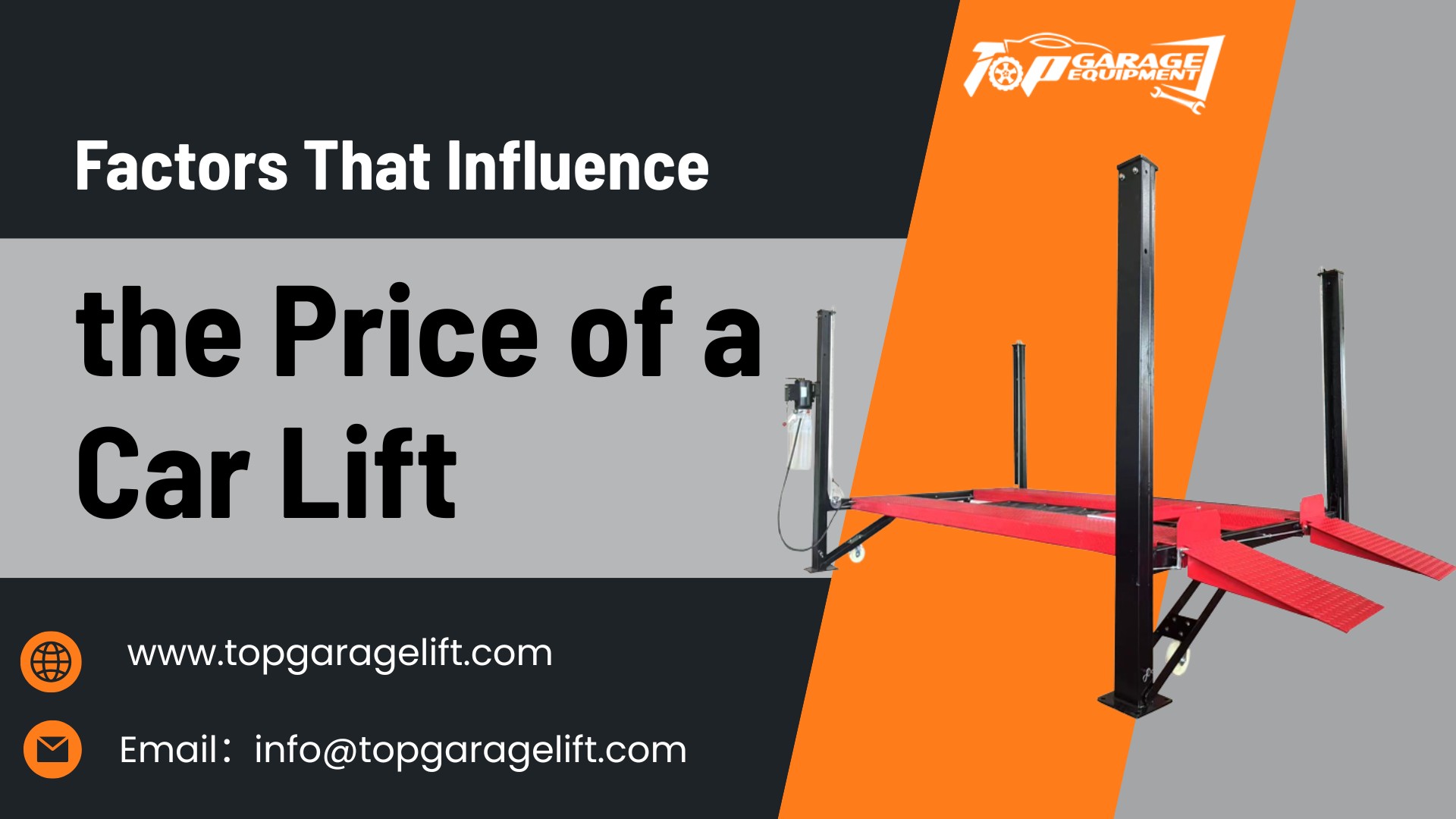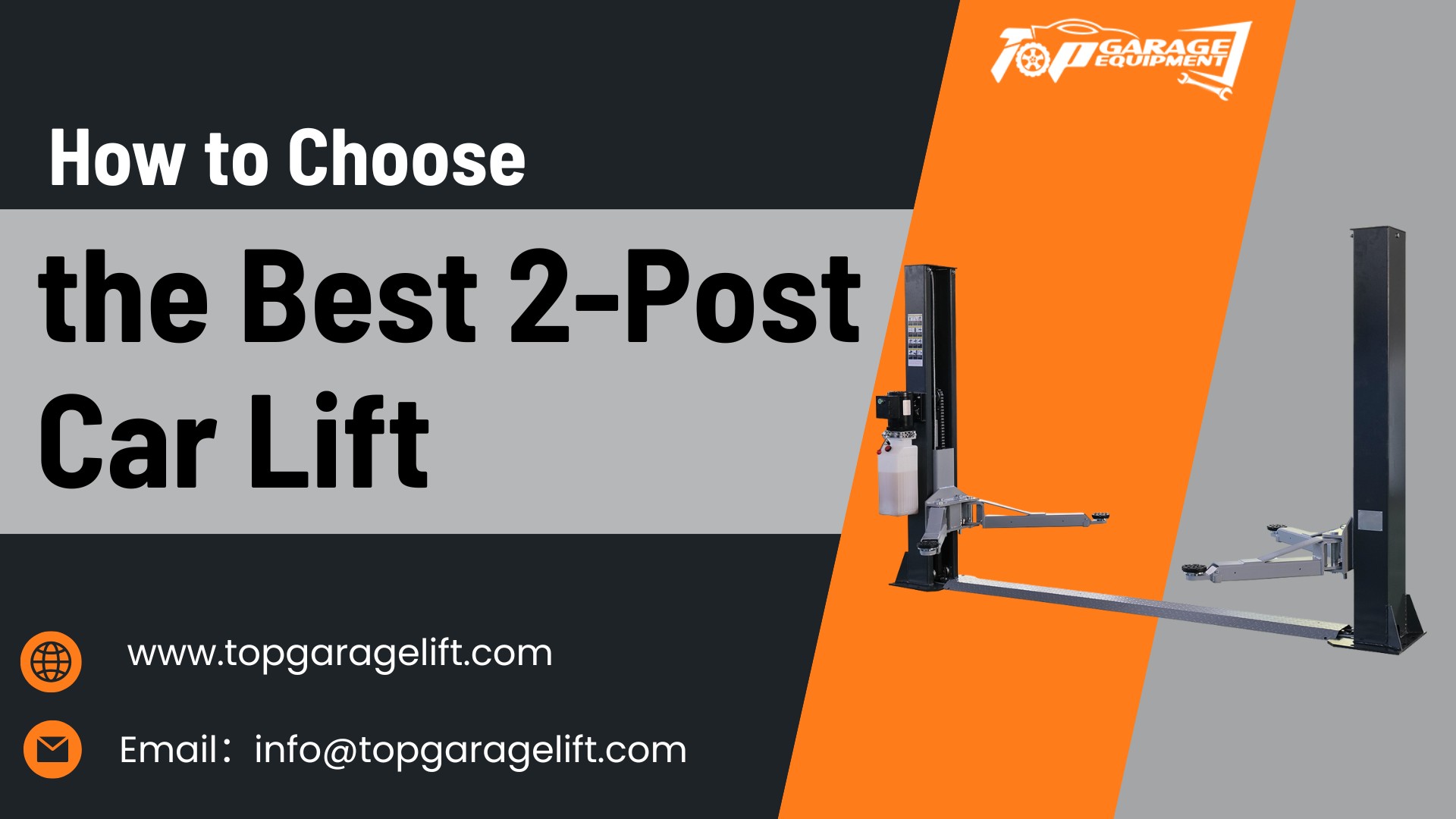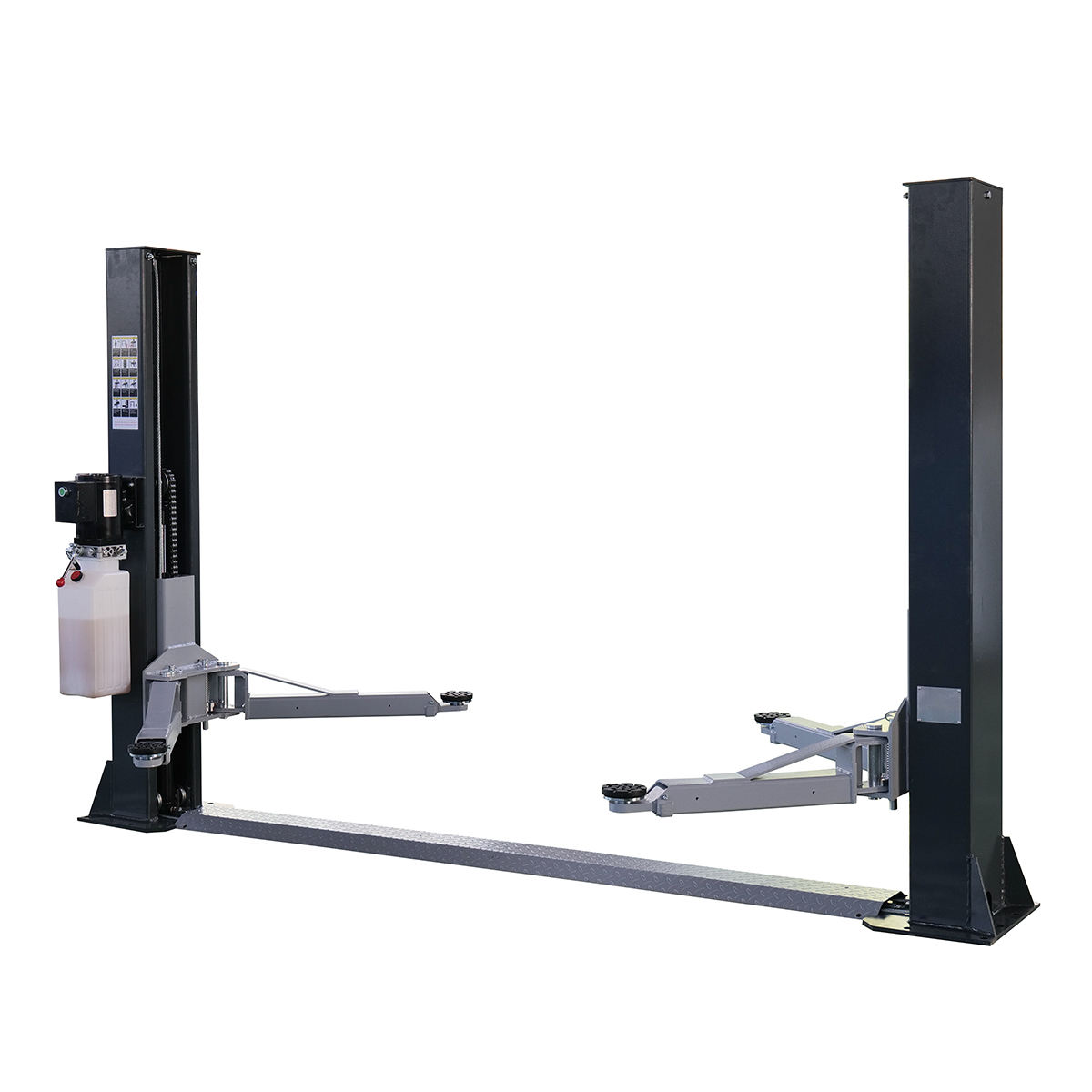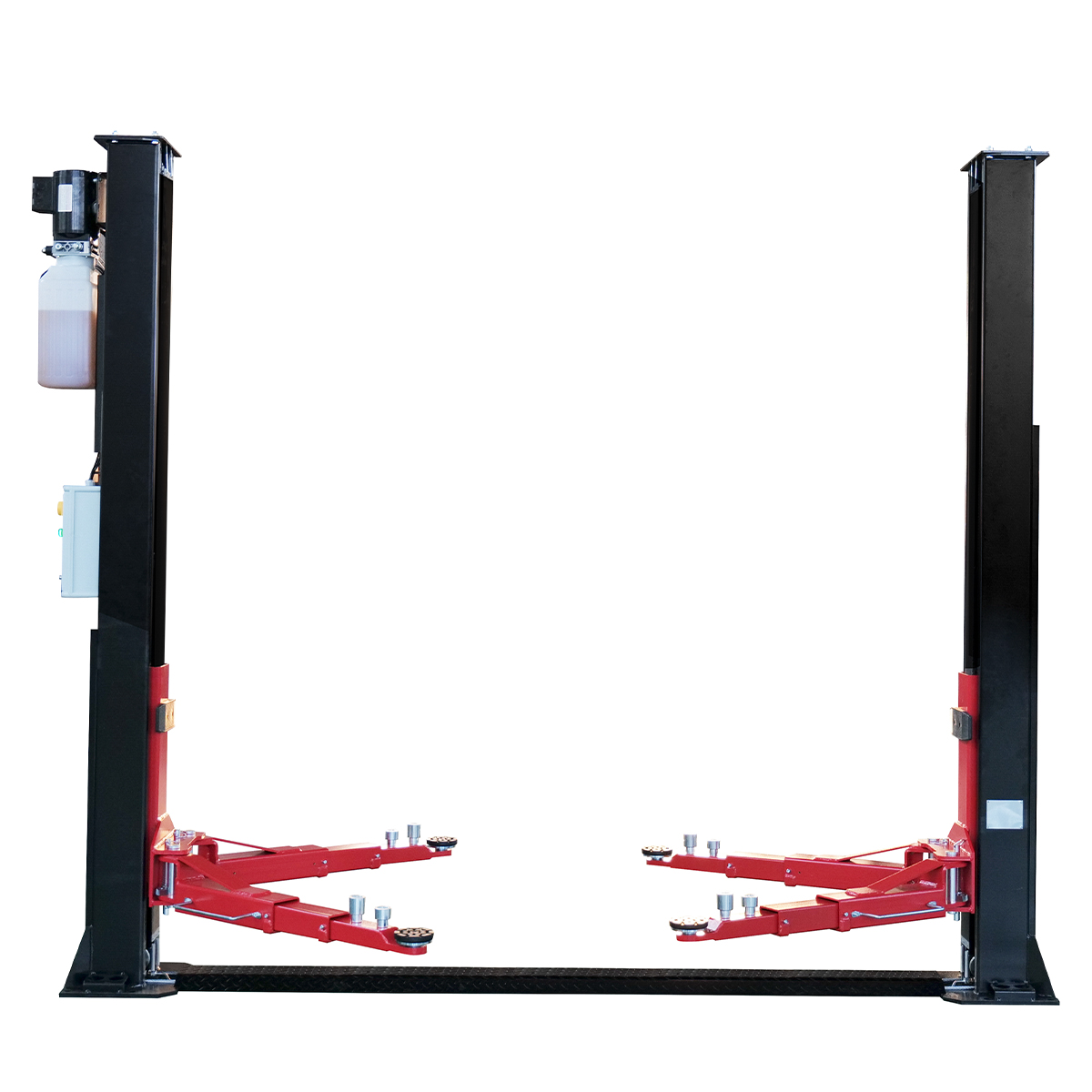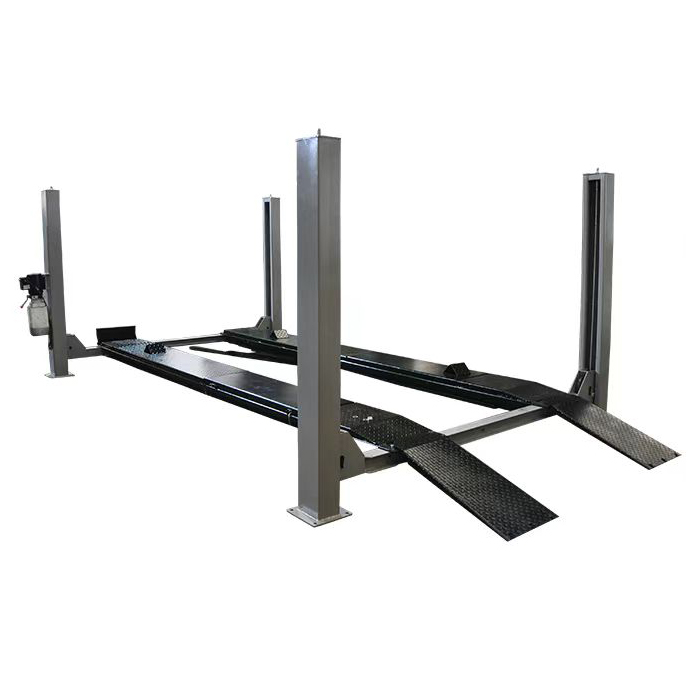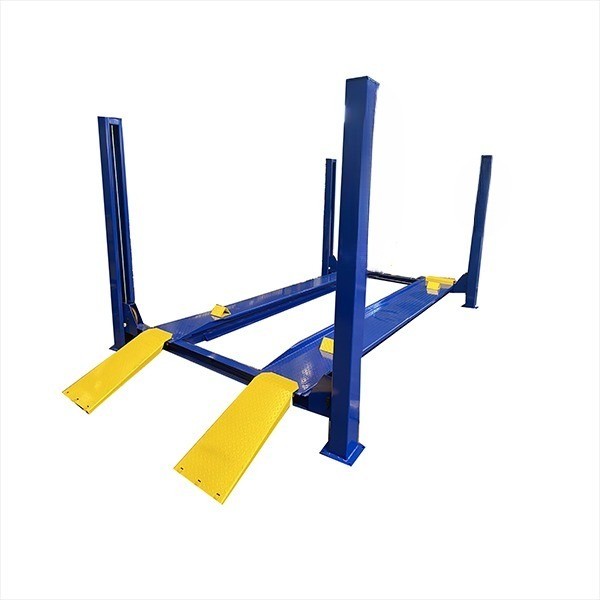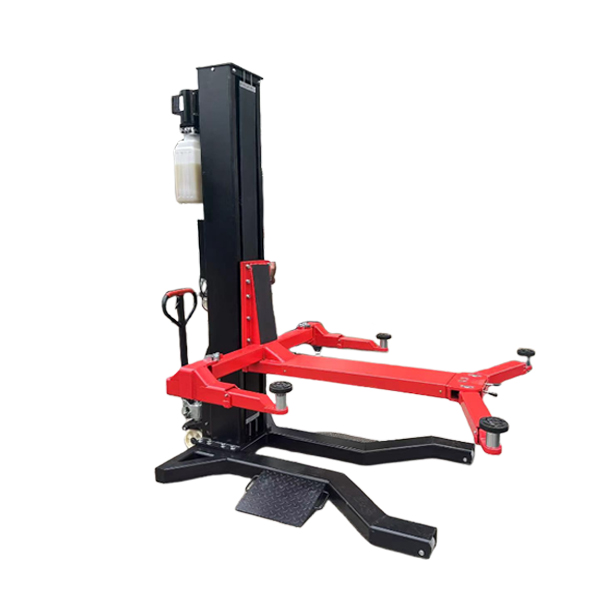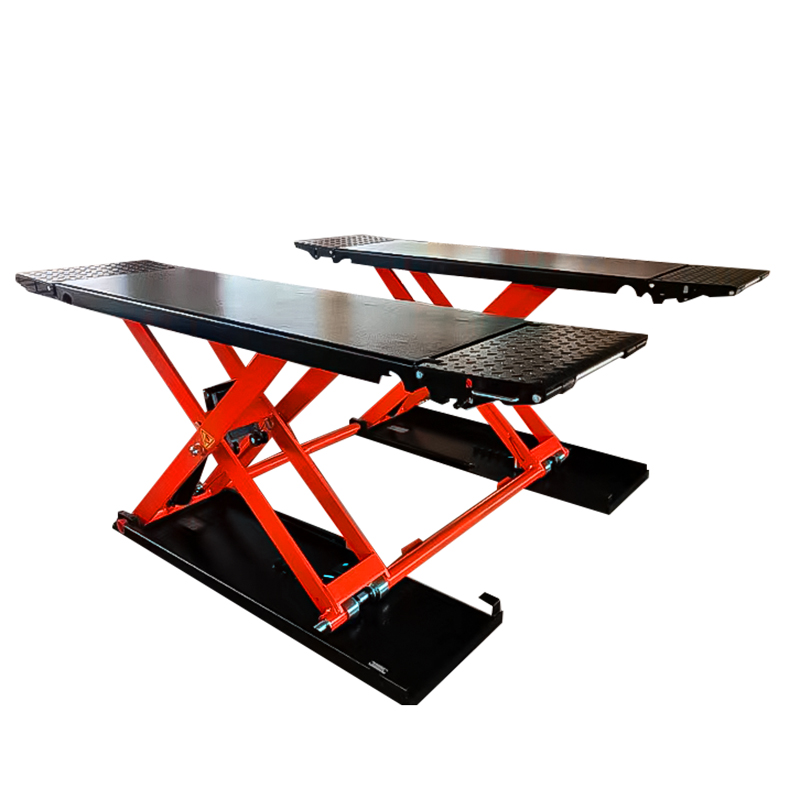In the competitive automotive service industry, selecting the right equipment is critical to maintaining operational efficiency, workplace safety, and long-term profitability.
Automotive scissor lifts have become a preferred solution for professional workshops and commercial garages, offering a space-efficient design, robust load capacity, and improved vehicle access.
This article explores the essential performance factors, safety features, and long-term value considerations that support informed, cost-effective investment decisions in professional lifting equipment.
Automotive Scissor Lift Overview
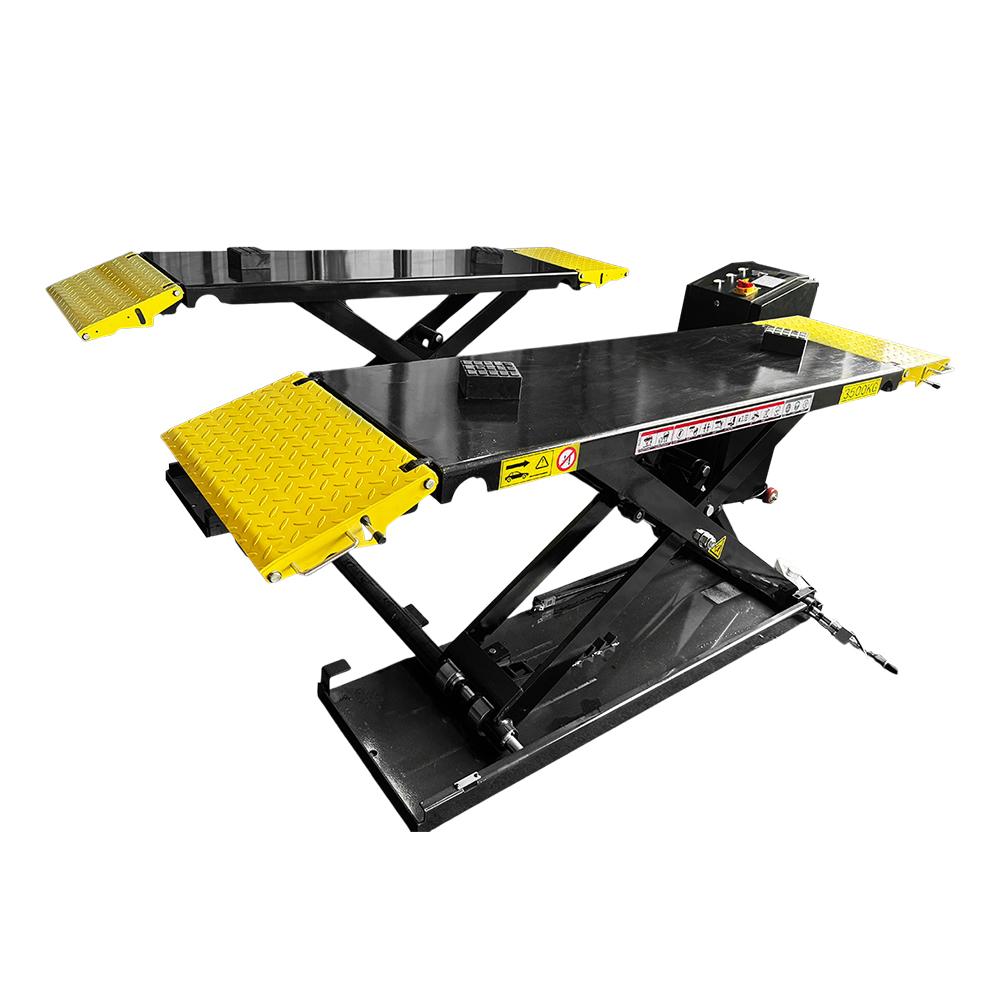
What Is an Automotive Scissor Lift
An automotive scissor lift is a type of vehicle maintenance equipment designed for lifting vehicles in automotive service centers. The lift uses a crisscross, or pantograph, structure to raise and lower a platform.
Hydraulic or pneumatic cylinders power the scissor legs, creating vertical movement. The base consists of strong brackets and guides rollers for stability. The platform supports the vehicle and connects to the upper arms of the scissor legs.
Power sources include electric motors, diesel, gas, or pneumatic compressors. Some auto scissor lift models offer portability with wheels, while others remain stationary for added stability.
| Component | Description and Function |
| Platform | Supports the vehicle; connects to the scissor legs. |
| Chassis | Houses the hydraulic system; may include wheels for mobility. |
| Scissor Legs | Arranged in an “X” shape; enable vertical movement. |
| Hydraulic System | Powers the lifting action using cylinders and fluid. |
| Electrical System | Controls the hydraulic system and safety features. |
| Base | Provides stability and guides rollers. |
| Power Source | Can be electric, internal combustion, or manual for emergencies. |
This space-saving design, combined with strong performance and versatility, makes the scissor lift essential for modern workshops. It helps maximize productivity and allows efficient servicing of many vehicle types within limited shop space.
Load Capacity Essentials
Assessing Load Needs
Matching the lifting capacity of an auto scissor lift to the heaviest vehicle in the shop is critical for safety and efficiency. Technicians must consider the maximum weight of vehicles serviced, including any additional equipment or modifications.
A lift with insufficient load capacity risks catastrophic failure and workplace injuries. The auto scissor lift must always operate on a firm and stable base to maintain stability and prevent tipping.
Operators should never exceed the rated load. Overloading causes uneven force distribution, which can deform the scissor legs and lead to loss of balance or overturning.
Safe operation depends on regular inspection of the work area for hazards and ensuring the lift sits on level ground. These practices protect both personnel and equipment, supporting long-term performance.
Capacity Ranges
Automotive scissor lifts come in a wide range of lifting capacities to suit different vehicle types and work environments. Small indoor lifts handle loads around 700 lbs, ideal for compact cars or personnel lifts.
Mid-rise and full-rise auto scissor lifts offer lifting capacities from 1,000 lbs up to 3,200 lbs, suitable for midsized vehicles and assembly line tasks.
Heavy-duty models, often diesel-powered, can lift heavy loads exceeding 1,500 lbs, making them fit for industrial vehicles and rough terrain.
The right auto scissor lift ensures efficiency and stability for automotive service centers, regardless of vehicle size.Dual master hydraulic cylinders and equalizing cylinders play a vital role in safe, level lifting.
These components balance hydraulic pressure, keeping the platform stable and preventing tilting during operation.
Safety in Automotive Scissor Lifts
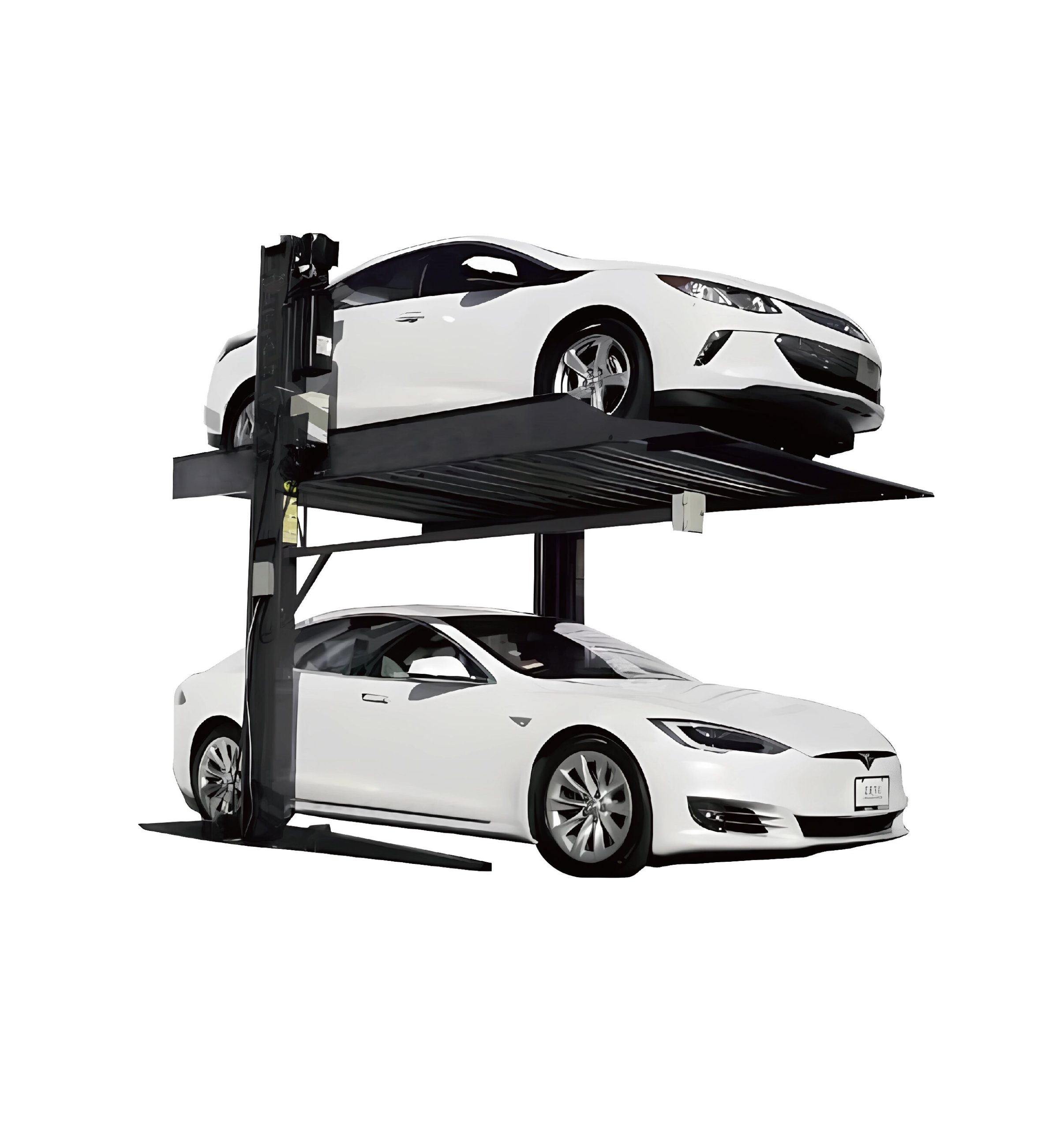
Key Safety Features
Modern automotive scissor lifts include advanced safety features to protect users and vehicles. Solid-steel safety lock bars secure the lift at various heights, preventing accidental lowering.
Limit switches stop the lift at maximum height, reducing the risk of mechanical failure. Safety locks engage automatically, holding the platform steady during maintenance or repair.
Dual hydraulic cylinders provide balanced lifting, which helps prevent tilting and collapse. Adjustable arms allow technicians to position vehicles securely, improving stability.
Additional safety features include anti-slip platforms and lock mechanisms that prevent unintended movement. Emergency stop buttons allow operators to halt the lift instantly if a problem occurs.
Guardrails and interlocked gates create physical barriers, reducing fall risks. Mechanical toe guards protect feet from moving parts. Overload sensors and tilt sensors stop the lift if unsafe conditions are detected.
Audible and visual alarms alert workers to hazards or when the lift approaches its limits. Maintenance safety devices, such as locking props, prevent accidental collapse during servicing.
| Safety Feature | Function | Benefit |
| Safety lock bars | Secure lift at set heights | Prevents accidental lowering |
| Limit switches | Stops lift at max height | Reduces mechanical failure |
| Dual cylinders | Balanced lifting | Prevents tilting/collapse |
| Adjustable arms | Secure vehicle positioning | Improves stability |
| Emergency stop button | Immediate shutdown | Quick accident prevention |
| Guardrails/gates | Physical barriers | Reduces fall injuries |
| Overload/tilt sensors | Detect unsafe conditions | Stops lift, prevents injuries |
Long-Term Value of Auto Scissor Lifts
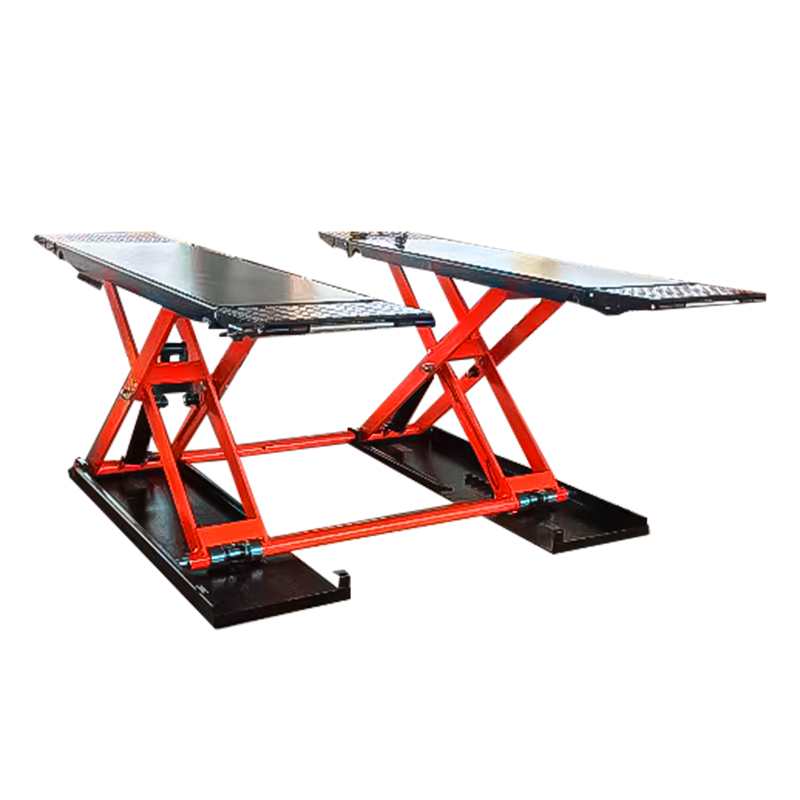
Durability Factors
High-quality scissor lifts use heavy-duty steel, stainless steel, and hardened steel for strength and long-term reliability. Reinforced components and quality parts help these lifts handle heavy loads and resist corrosion.
Manufacturers add features like emergency stop buttons, limit switches, and overload relays to improve both durability and safety.
Hydraulic power systems with self-lubricating bushings and protective bellows support reliable lifting. These materials and construction methods make automotive equipment last longer and perform better in demanding environments.
Technology Advancements
Recent advancements have improved the efficiency, ergonomics, and sustainability of automotive scissor lifts. Automation and robotics now allow precise, independent operation.
Advanced sensors and programming enable smooth movement and pre-set height adjustments. Energy-efficient electric systems reduce operational costs and support green initiatives.
Real-time diagnostics and predictive maintenance features help identify issues early, reducing downtime. Ergonomic design improvements make lifts safer and more comfortable for technicians.
Customization options and integration with digital management systems further boost productivity and asset utilization. These innovations lower the total cost of ownership and improve the overall value of automotive equipment.
Conclusion
For automotive businesses looking to enhance efficiency, safety, and long-term value, professional scissor lifts are a strategic investment.
At TOP-Garagelift, we provide high-performance lifting solutions engineered for the demands of modern workshops and service centers.
By choosing equipment that delivers on performance, durability, and compliance, your business is positioned for long-term growth, improved service quality, and maximum return on investment.


